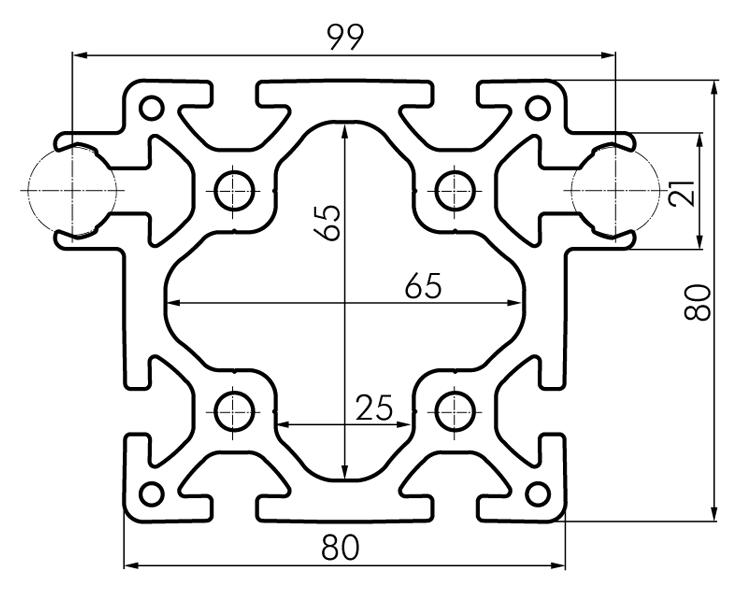Linear Motion Systems
Omega Drives
Linear Motion Systems 16 with omega drive
The omega drive is manufactured for timing belts AT10/22 and AT10/50. The carriage becomes the fixed part and motion is transfered to the profile axis. Standard ranges of omega drives are either attached to carriages or stand-alone for special customer applications.
Omega Drives are manufactured in five basic variants. Their purpose is to replace the drive unit on the fixed part of the axis. The timing belt is tensioned via external timing belt tensioners at each end of the profile axis. Omega drives are normally used with integral carriages.
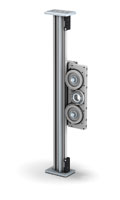
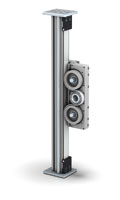
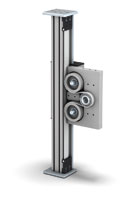
C-Track with omega drive
The Omega drive is manufactured for the Paletti C80/100 linear actuator system. The drive is transferred from the end of the actuator to the carriage which is now fixed, thereby transferring movement to the track profile.

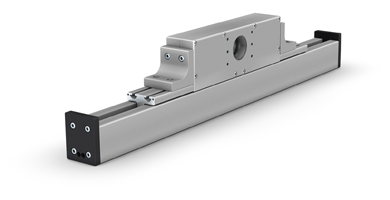
Screw Drives
Trapezoidal / Ball Screw Transmission
Linear actuator system 16 using track profile 80x80, open have either trapezoidal or recirculating ball screw transmissions. Screw diameters and pitches of 20x20 or 20x5 are standard. Customer specific spindles with strengthened bearings are available on request.

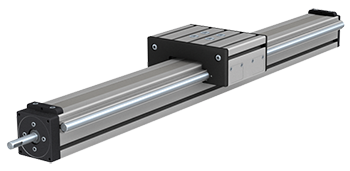
Internally Guided Actuator 120x120
Ball Screw With Recirculating Steel Ball Guide Rail
The actuator 120x120 is guided by means of an internal 25mm recirculating steel ball guide rail. The unit is driven via ball screw and is maintenance free in operation. In order to guard the internal steel guide rail against contaminants, Paletti incorporates a textile cover strip in the actuator.

Recirculating Ball Slide
The Paletti recirculating ball slide system uses an aluminium guidance rail and recirculating ball carriage that houses plastic ball bearings. The ball bearings go around in four guidance bores and are returned back through the carriage by plastic end caps attached to each end of the carriage.


Glider Slide
The Paletti glider slide guidance system uses an aluminium guidance rail and carriage that has four open round channels. Each channel holds up to four small plastic rods. The rods are retained by plastic end caps attached to each end of the carriage.



